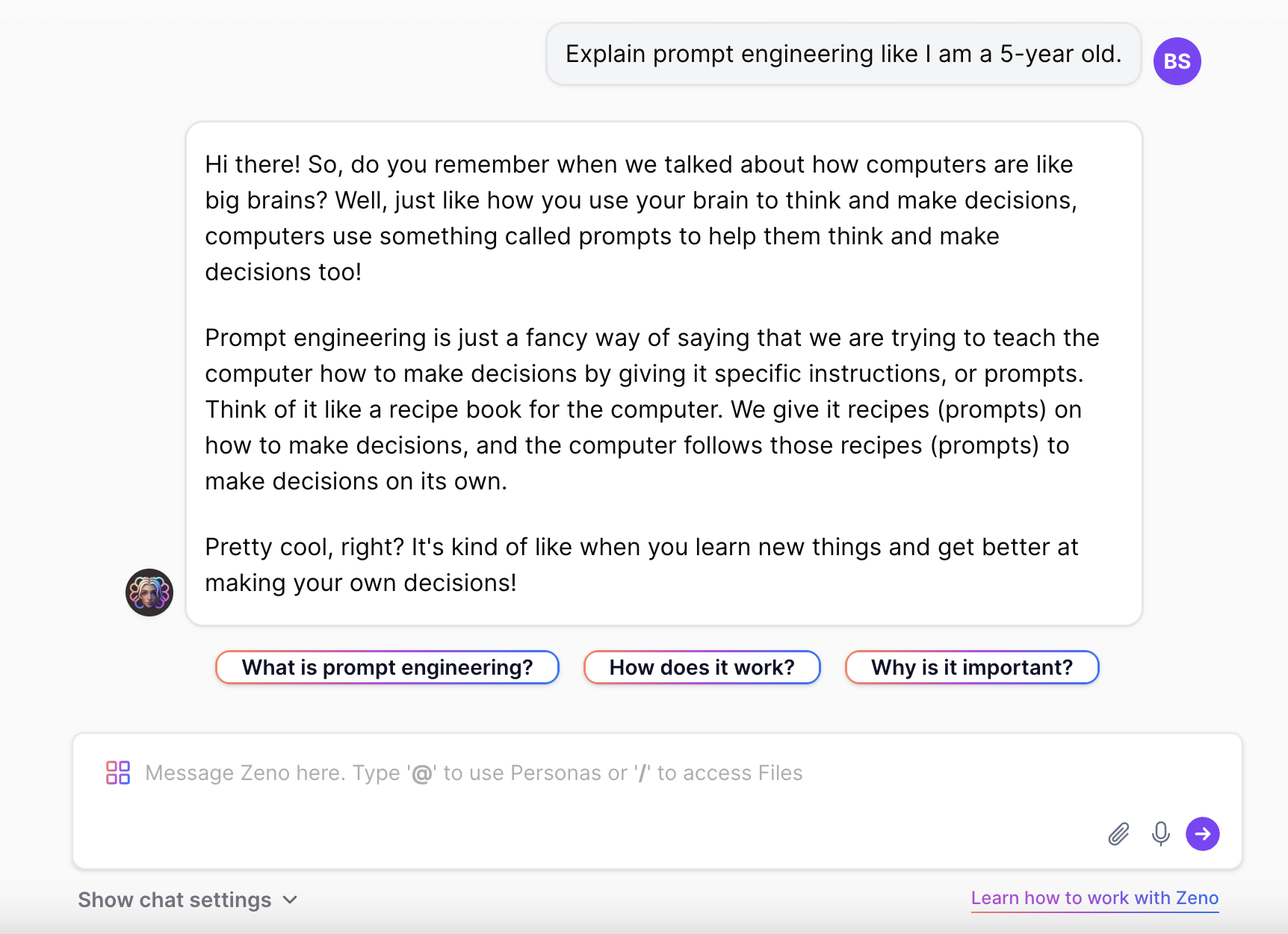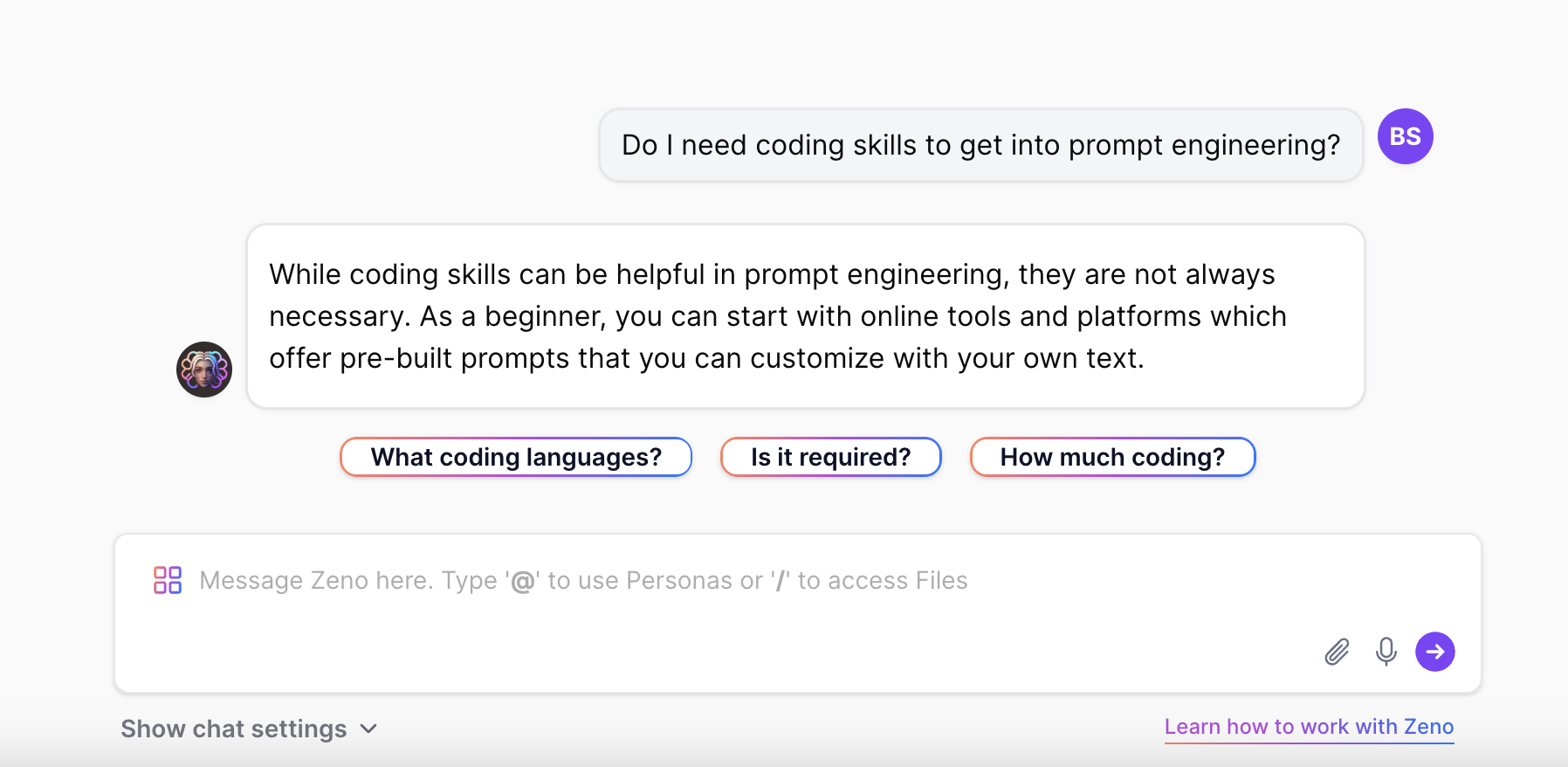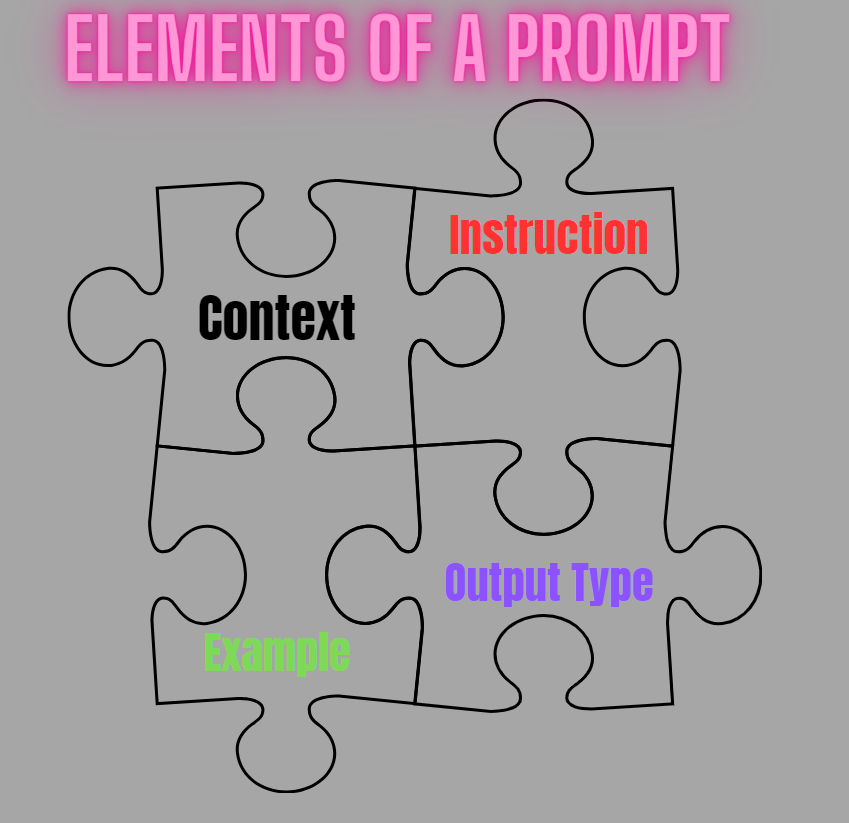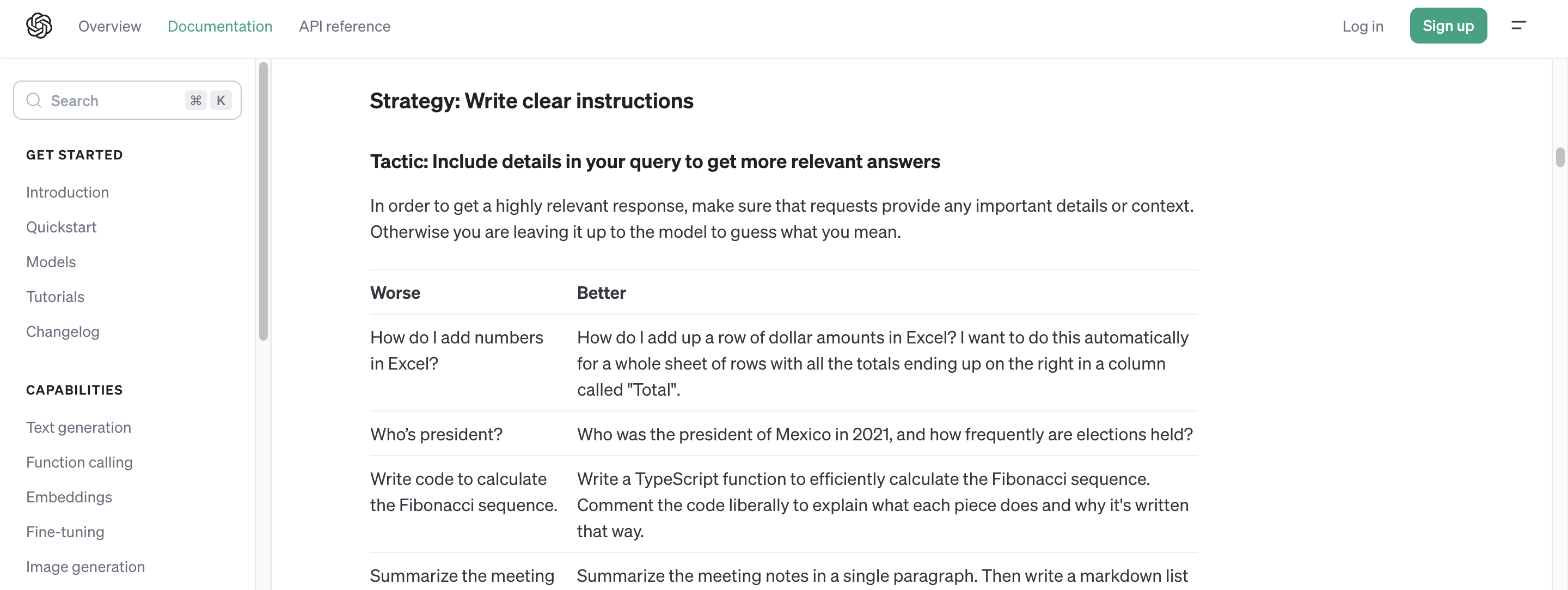Do you remember how Office applications changed businesses and companies? Generative AI models have the potential to further change the business sector and daily life. As in the past, learning how to use Generative AI will allow you to adapt to the changing sector. Prompt engineering is what you need to use AI models effectively and get maximum efficiency from them. Prompt engineering is understanding the patterns of LLMs and crafting prompts that will enable them to generate accurate output.
In this article, we will explore what prompt engineering is and provide basic prompt engineering guides. Curious? Stay tuned.
TL;DR
- Prompt engineering is prompt crafting for AI models to generate better and more accurate output.
- Although you do not need coding skills for prompt engineering, you do need reasoning, creativity, and analytical skills.
- Although the duration of learning prompt engineering varies from person to person, you can learn faster by practicing more.
- To learn prompt engineering, you must be familiar with generative AI, LLMs, parts of prompts, and prompt engineering techniques.
- The most effective way to learn prompt engineering is to examine online prompt engineering guides.
- The best online resources to improve your prompt engineering skills are TextCortex Prompt Engineering Guide, OpenAI's Prompt Engineering Guide and promptingguide.ai.
What is Prompt Engineering?
Prompt engineering is designing the inputs you enter into AI models to get the desired output quickly and accurately. In other words, learning prompt engineering is learning to communicate with LLMs. Although communicating with AI is not like in science fiction movies, it is still a fun process.

What are Prompt Engineering Jobs?
Prompt engineering jobs involve using AI models to produce the desired outputs for companies. The AI models employed in these jobs may include ChatGPT, ZenoChat, Midjourney, or Stable Diffusion. While it is typically enough to be familiar with prompt engineering for these jobs, certain postings may seek experience in other fields. For instance, a prompt engineering job listing from a pharmaceutical company may ask for a medical background and related experience.
Do I Need Coding for Prompt Engineering?
No, you do not need any coding experience or technical background to learn basic prompt engineering skills. Prompting is all about your reasoning, logic, and analytical skills. In other words, you should analyse how AI models generate outputs from your prompts and re-write your prompts to reach the final output. However, having a coding background indirectly helps you improve your prompt engineering skills.

How Long Does It Take to Learn Prompt Engineering?
It depends on how intensively and hard you want to learn and practice. Approximately 10 hours of training is sufficient to learn all prompt engineering techniques, patterns of AI models and the basics of prompting. But to understand the patterns and parameters of different AI models, you need to practice with them longer.
Every AI model comes with its own challenges. For example, although Stable Diffusion is an AI tool with which you can freely produce images, the slightest changes in your prompt greatly affect the outputs. Also, even if you cannot get the outputs you want in your first prompting experiences with AI models, do not get discouraged and keep practising!
How to Learn Prompt Engineering?
There are a few topics you need to be familiar with to learn prompt engineering. For example, you can learn more about the tool you use by learning the basics of generative AI and large language models. This way, you can understand their working patterns more easily and boost your learning process.
Generative AI and LLMs
To understand how prompting works, it is important to familiarize yourself with the tools you will be using: Generative AI and Large Language Models (LLMs). Generative AI is a type of technology that utilizes pre-trained data and parameters to produce new and unique outputs, such as textual, visual, code, or other forms of content. Large Language Models (LLMs) are a specific type of AI technology that employs deep learning and machine learning to perform various language-based tasks.
Elements of a Prompt
You want to improve your prompt engineering skills and you are about to enter your first prompt into an AI model. But what should your prompt contain and what form should it be? Here is the answer:
- Context: External information that can steer the AI model to more accurate outputs.
- Instruction/question: A specific task that you want the AI model to perform.
- Example: A data that allows the AI model to produce similar output, also known as few-shot learning.
- Output Type: the format of output that you want to get.

When crafting a prompt for an AI model, you should make sure that your prompt includes these parts. Thus, you can get better and more accurate outputs. In addition to these parts, there are also parts such as persona and knowledge base that you can add to your prompt. However, these are advanced steps required for specific use cases.
Prompt Engineering Techniques
When it comes to writing prompts, there are techniques you must be aware of. These techniques will help you improve your prompting and get better results in different tasks. The most popular prompting techniques include:
- Zero-shot Prompting: This technique refers to the use of the AI model's generative skills without providing extra data.
- Few-shot Prompting: Adding examples that the AI model can take as a sample to the input.
- Chain-Of-Thought Prompting: It refers to breaking complex and larger tasks into sub-tasks. This ensures that the AI model performs complex tasks better and more accurately.
- Self-Consistency: While you provide a reasoning path to the AI model in Chain-Of-Thought, in this technique you enable the AI model to create its own reasoning paths and select the correct paths.
- Generated Knowledge Prompting: It is the process of the AI model generating knowledge for a given task and responding with advanced outputs.
Although these are not all prompt engineering techniques, they are the most frequently used and effective ones. As you improve your prompting skills, you will need advanced prompting techniques. By using these techniques, you can get maximum efficiency from AI models and complete your tasks much more accurately.
Utilize Online Prompt Engineering Guides
If you are new to prompt engineering, we suggest checking out online prompt engineering guides to establish a strong foundation. These guides typically cover a wide range of topics including specific use cases, basic prompting, and various prompting techniques. Additionally, we recommend exploring different resources and taking courses to expand your knowledge, rather than relying solely on a single prompt engineering guide.
Online Prompt Engineering Guides
There are online resources you can use to improve your prompt engineering skills. Let's take a closer look at the best online prompt engineering guides that can help you level up your prompting skills.
TextCortex Prompt Engineering Guide
TextCortex, your friendly AI assistant, offers a prompt engineering guide to improve your prompting skills and introduce basic prompting. You can take your prompting skills such as Midjourney, text generation and automation to the next level by completing the TextCortex prompt engineering guide. You will learn with TextCortex prompt engineering guide:
- Basic Prompt Engineering
- Midjourney Prompting
- Prompt Templates and AI-powered Video Generation
- Automate Writing Tasks
- Training AI Models
- Data/Document Analysis
- Prompting for Research Tasks
After improving your prompt engineering skills, you can use our conversational AI, ZenoChat, to practice. ZenoChat comes with a persona called “Enigma, the prompt engineer” designed to assist you with prompting tasks. Using this persona, you can improve your existing prompts, generate prompts from scratch, or learn what you need to improve in your prompt.
OpenAI’s Prompt Engineering Guide
For those who are new to prompt engineering and looking to learn the basics, we recommend taking a look at OpenAI's prompt engineering guide. This guide provides an overview of the strategies and techniques that can be used to improve the quality of your prompts and achieve more accurate results. Additionally, the guide includes helpful tips and strategies for using the GPT-4 model more effectively. This resource can be a valuable tool for anyone looking to develop their skills in prompt engineering.

promptingguide.ai
If you want to learn the logic and terms of prompt engineering, we recommend you visit promptingguide.ai. This guide teaches the basics of prompting, advanced prompting techniques, and prompt engineering use cases. You can also find prompting strategies for different AI models such as GPT-4, Gemini, and Llama in this guide.

![Prompt Engineering Guide [From Beginner to Advanced]](https://textcortex.com/cdn-cgi/image/format=avif,quality=90/https://assets-global.website-files.com/622611a2b23d0e6b270fba81/6586c1b64eec6dba61e27d65_Product%20GIFs%20(1200%20%C3%97%20630px)%20(27).png)
%20(13).png)
%20(12).png)
%20(11).png)